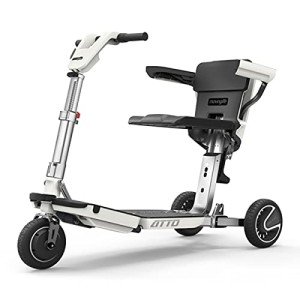Portable Mobility Scooters: The Good, The Bad, And The Ugly
Portable Mobility Scooters: Enhancing Freedom and Independence
As the world increasingly moves towards inclusivity and ease of access, portable mobility scooters have emerged as an innovative solution for people with mobility challenges. These compact, easy-to-transport scooters are designed to empower users with the ability to navigate their environments with self-confidence and ease. In this blog post, we will check out the attributes, advantages, and factors to consider when going with a portable mobility scooter, supported by tables and FAQs to supply a detailed summary.
Comprehending Portable Mobility Scooters
Portable mobility scooters are lightweight, battery-operated lorries that supply an alternative mode of transport for those with limited mobility. Put together utilizing durable products, they are specifically engineered to be lightweight and compact to assist in easy transportation in vehicles or on public transportation.
Key Features of Portable Mobility Scooters
Function
Description
Weight Capacity
Many scooters can support users weighing between 250 to 500 pounds
Battery Life
Typical range of 10 to 30 miles per charge
Speed
Normally runs in between 4 to 8 miles per hour
Turning Radius
Differs from 32 to 60 inches, making them suitable for indoor usage
Foldability
Numerous models can be easily folded for transport
Wheels
Generally equipped with either strong or pneumatic tires
Portable mobility scooters are ideal for both indoor and outside usage, offering stability and ease of movement.
Benefits of Portable Mobility Scooters
Boosted Freedom: Users can take part in activities that were formerly challenging, such as shopping and socializing, thereby enhancing overall lifestyle.
Transport Convenience: Many portable scooters can be easily taken apart or folded, permitting users to transport them in cars, vans, or public transport.
Cost-efficient: Compared to powered wheelchairs, portable scooters are often less costly, supplying a cost-effective solution.
User-Friendly Design: Most models feature intuitive controls, making them simple to operate for people of all ages.
Variety of Options: With numerous brands and designs on the market, prospective users can select scooters that match their specific needs— ranging from off-road use to compact indoor alternatives.
Crucial Considerations When Choosing a Portable Mobility Scooter
- Weight and Portability: Assess the weight of the scooter itself and its parts. daniellabradley.top are typically easier to transfer.
- Battery Life and Range: Consider how far you require to travel on a single charge. If you anticipate long journeys, a scooter with a prolonged battery life is important.
- Size and Dimensions: Measure where you'll save the scooter and guarantee it fits easily in your vehicle or home.
- Convenience Features: Look for scooters with adjustable seats, armrests, and other ergonomic features for added convenience throughout usage.
- Surface Compatibility: If you prepare to utilize the scooter outdoors, ensure it can handle numerous surfaces (e.g., gravel, turf) with ease.
Consideration
Importance
Weight & & Portability
Affects ease of transportation and storage.
Battery Life
Figures out range and liberty to check out.
Size
Essential for storage and maneuverability.
Comfort Features
Enhances the total user experience.
Terrain Compatibility
Makes sure adaptability in outside conditions.
Often Asked Questions (FAQs)
1. How quickly can a portable mobility scooter go?
Most portable mobility scooters can reach speeds in between 4 to 8 miles per hour. Nevertheless, the speed may vary based on the design and the weight of the user.
2. Do portable mobility scooters need a license or registration?
In most countries, portable mobility scooters do not require a chauffeur's license or registration, however it's necessary to examine regional regulations.
3. What is the common price range of portable mobility scooters?
Rates generally vary from ₤ 600 to ₤ 3,000 or more, depending upon features, brand, and specifications.
4. Can portable mobility scooters be utilized on public transportation?
Yes, many public transport systems accommodate portable mobility scooters, however it's suggested to inspect in advance regarding policy information and area limitations.
5. What are the upkeep requirements?
Regular maintenance consists of battery checks, tire evaluations, and keeping the scooter clean. It's recommended to speak with the user handbook for specific maintenance guidelines for your design.
Portable mobility scooters have become a lifeline for lots of individuals looking for independence and mobility in their every day lives. Their benefit, ease of usage, and variety of readily available models allow users to select the ideal scooter to fit their way of life.
For anyone thinking about purchasing a portable mobility scooter, it's vital to assess individual needs carefully and explore different choices on the marketplace. With the right choice, these scooters can considerably boost mobility and help with a more active way of life, ultimately leading to enhanced health and health and wellbeing.
By comprehending the functions and factors involved in choosing a portable mobility scooter, users can take the primary step towards claiming their flexibility once again. Whether for running errands, taking pleasure in the outdoors, or just walking around the home, portable mobility scooters redefine what it means to remain active and taken part in life.
